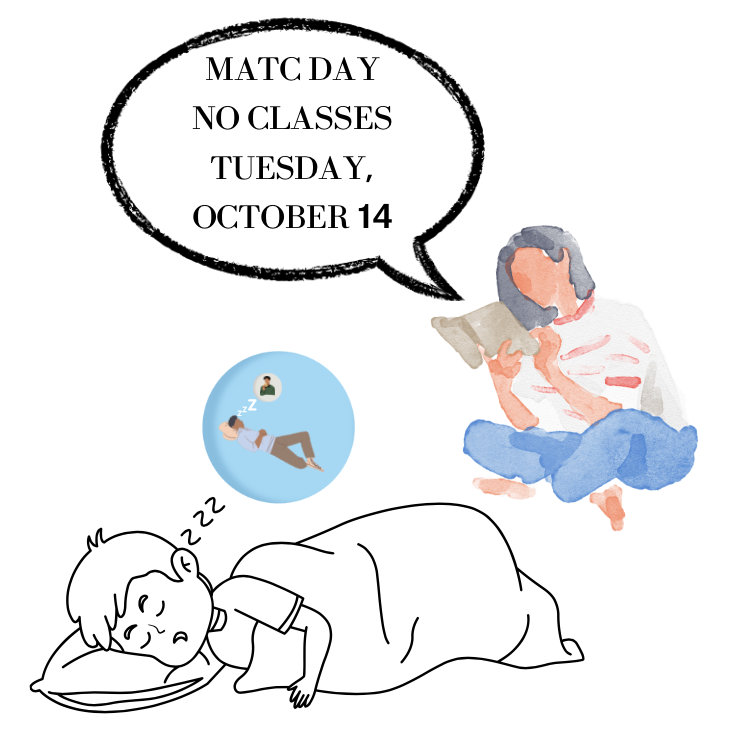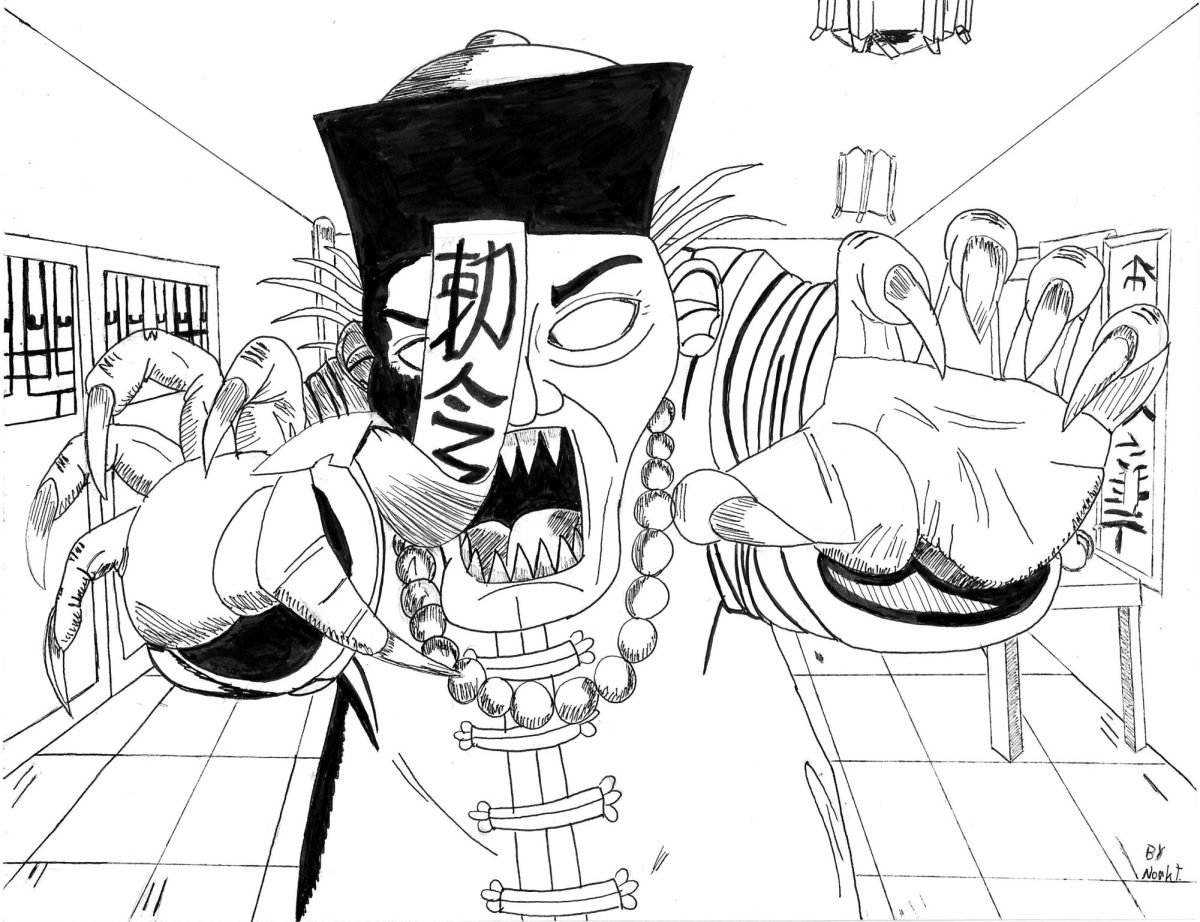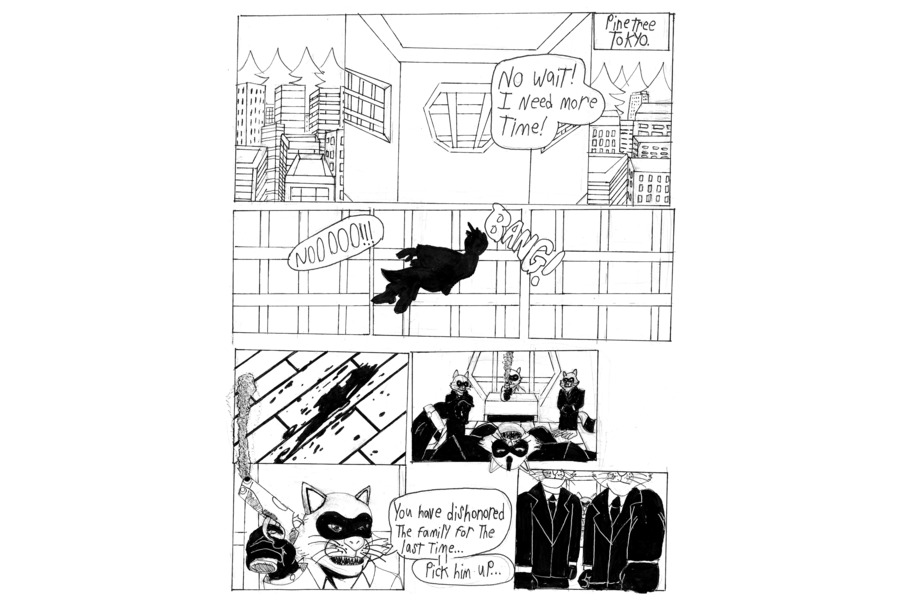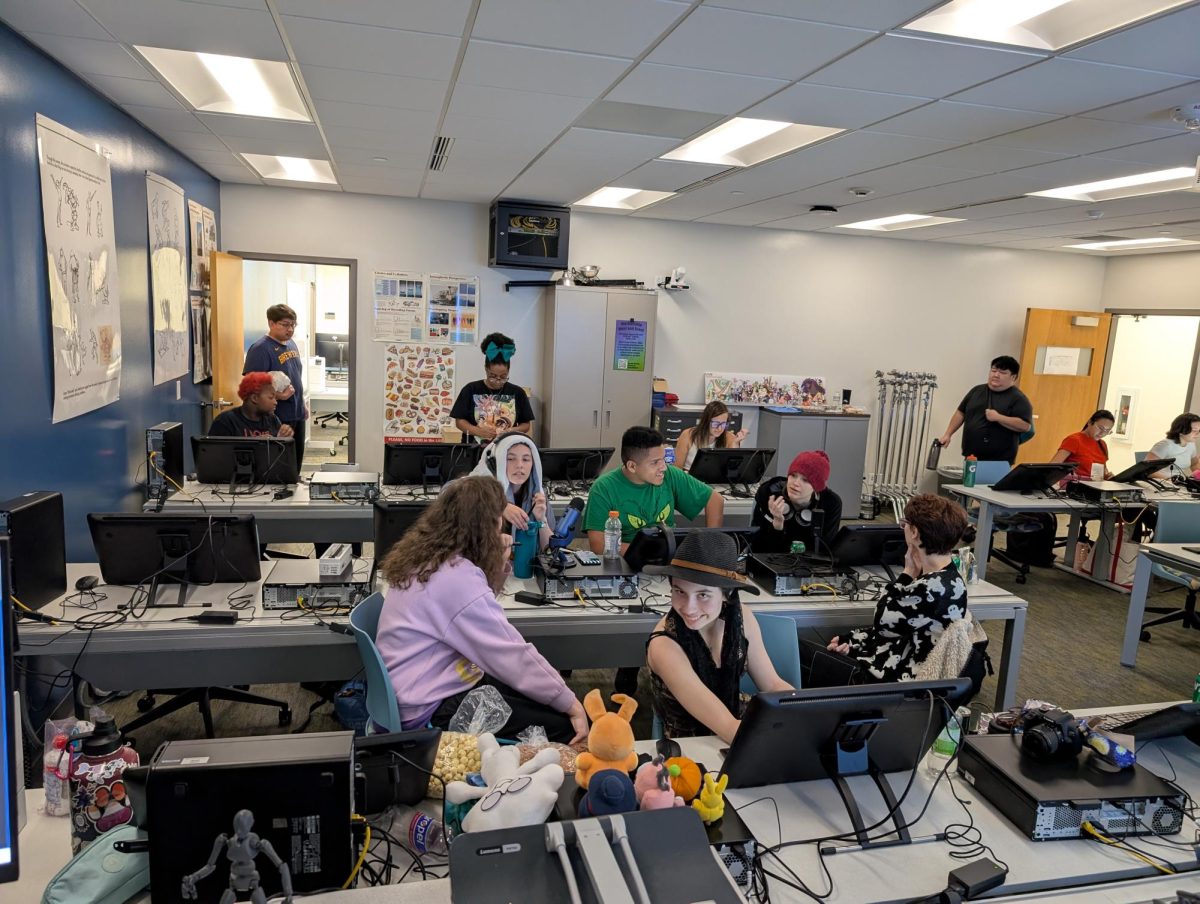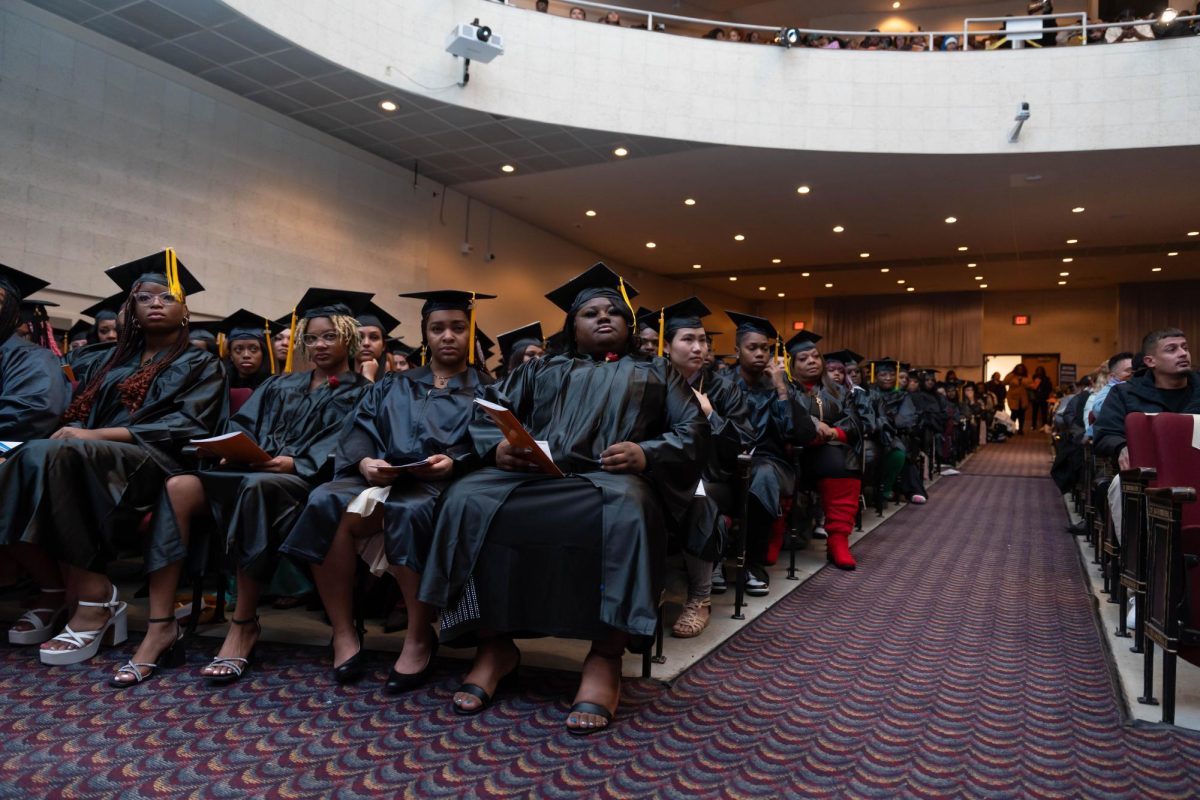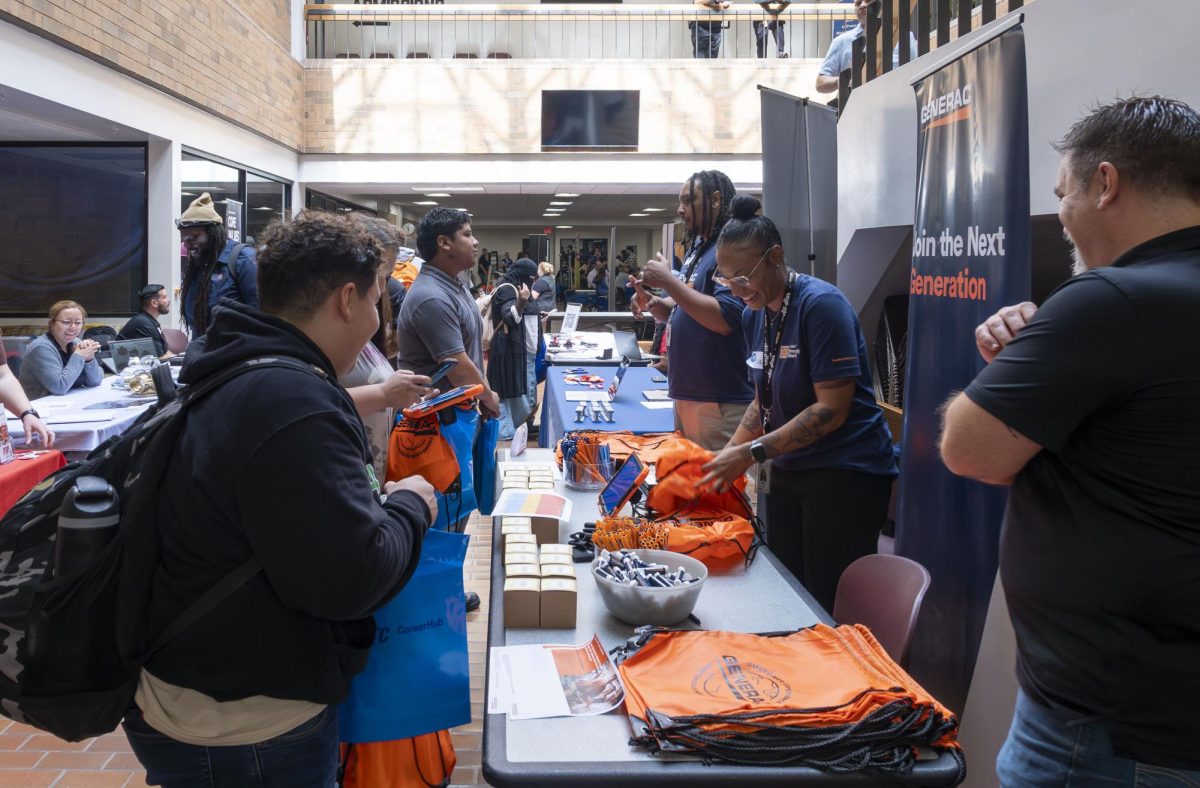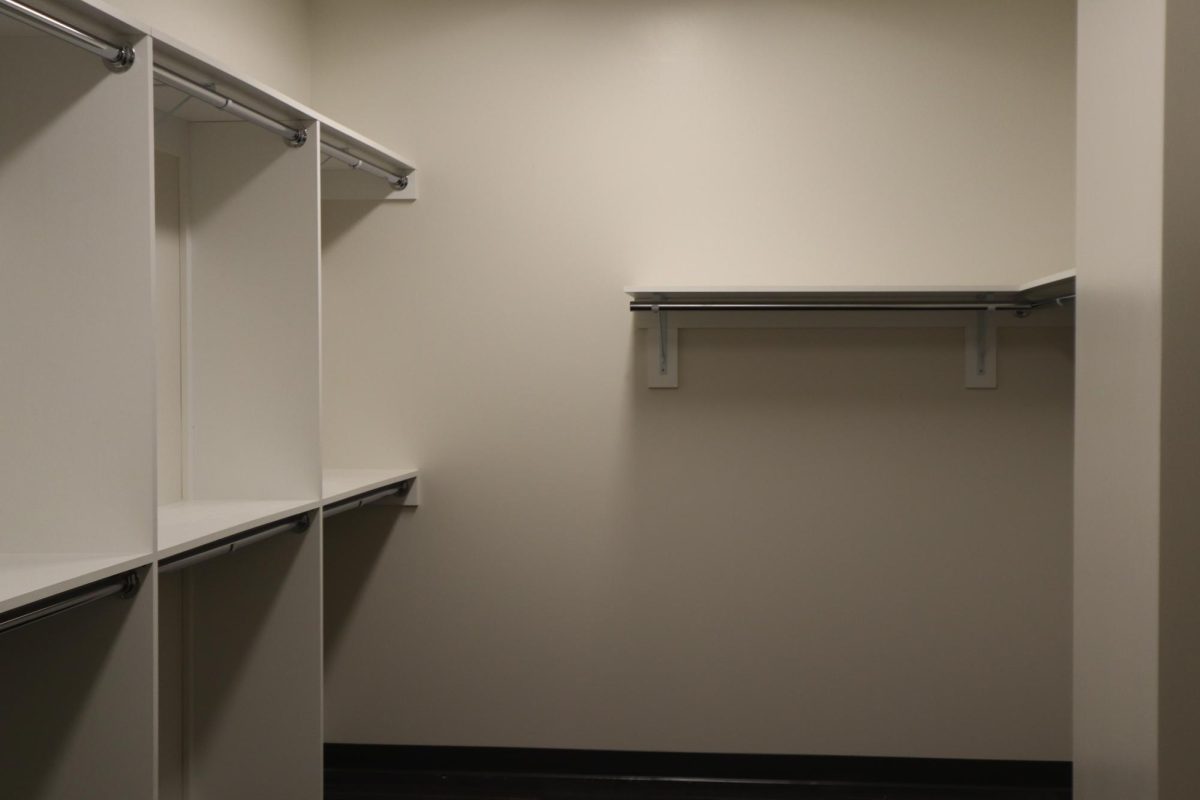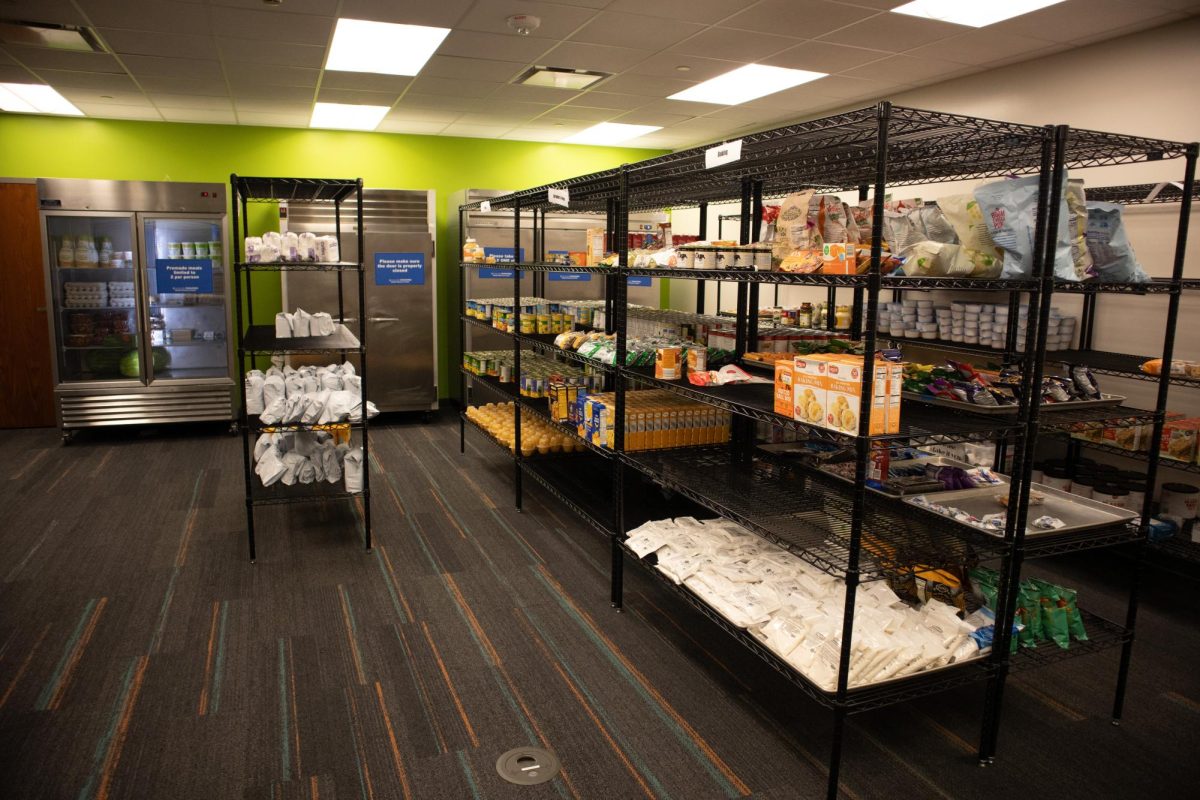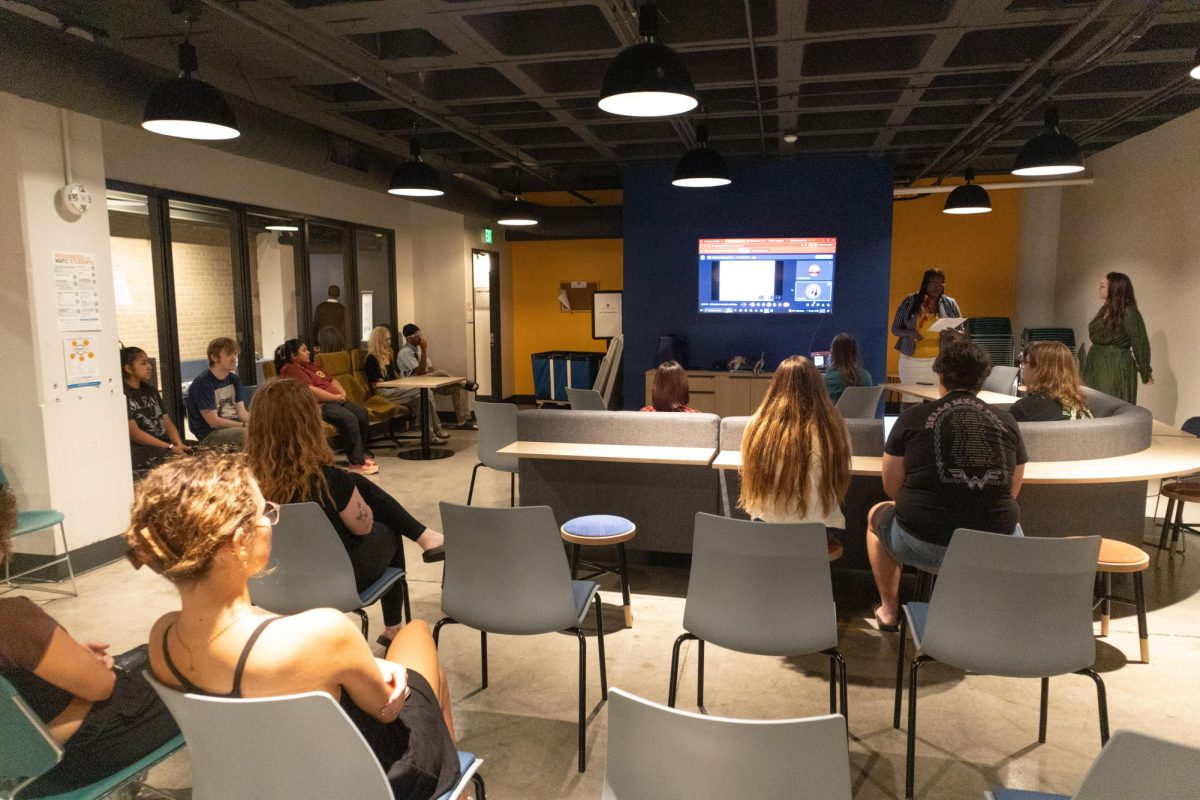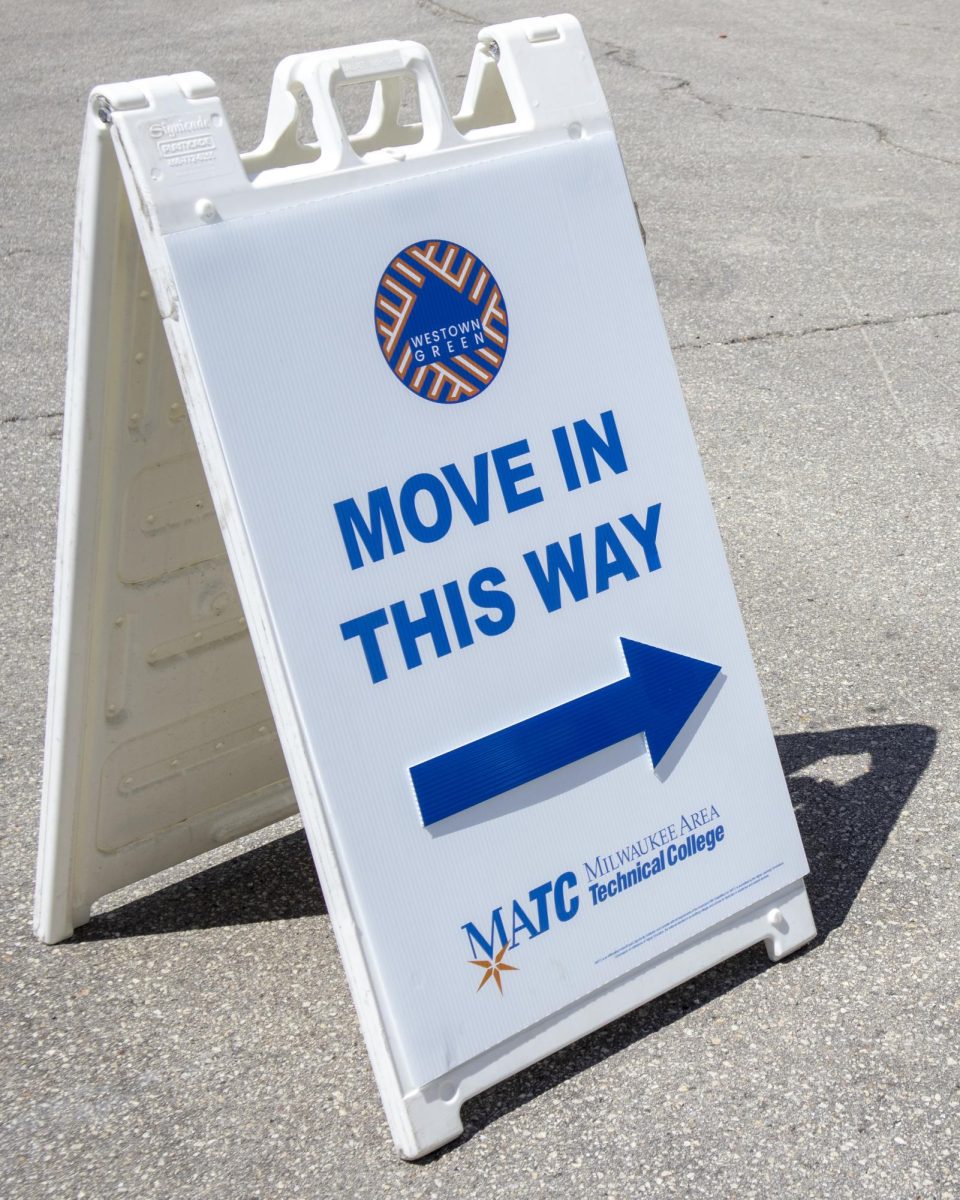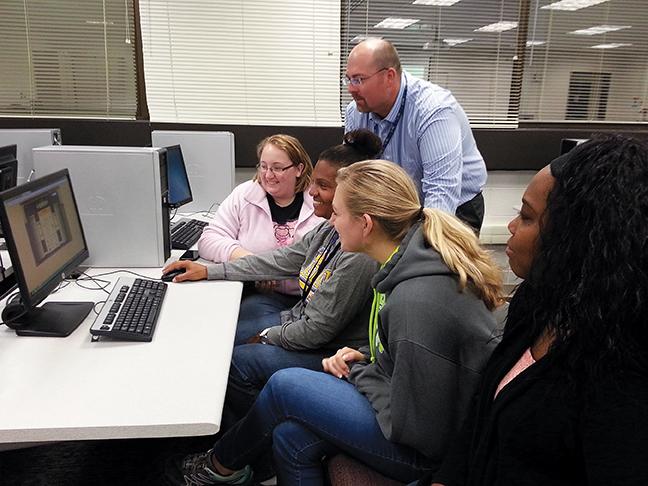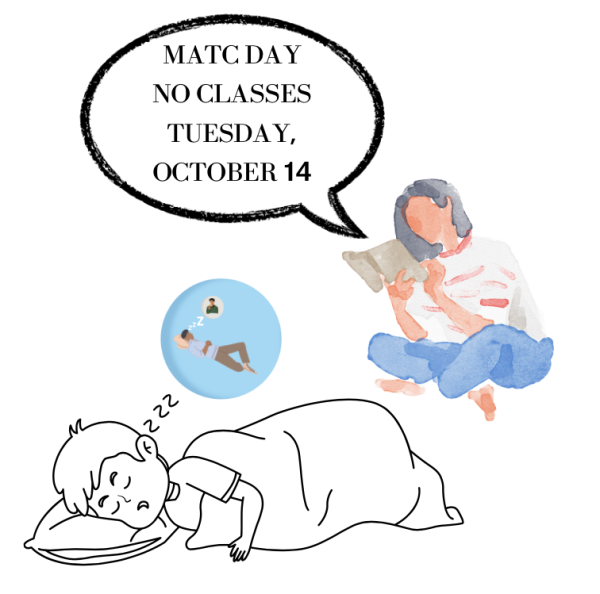Class uses simulation ‘Beer Game’ to engage students
Students from MATC’s Marketing Management and Transportation Logistics courses look on as instructor Dean Le Blanc, program coordinator for the Supply Chain Management program, explains the bullwhip effect that occurs in the simulated “Beer Game” that is being used to familiarize students with the important process of factory, distributor, wholesale, retail communications relations.
A new, innovative gaming simulation is currently being used in MATC’s Supply Chain Management program. The simulation is called “The Beer Game” and is an interactive tool used to highlight the effects of poor supply chain management between the factory, distributor, wholesaler and retailer. Dean Le Blanc, program coordinator and instructor at MATC’s Oak Creek campus for Supply Chain Management, says, ‘The Beer Game’ computer simulation serves as a link between supply chain theory and practical application.”
The game is played in rounds. Each round, students place and fulfill orders, with no communication between entities. By doing so, students get a chance to feel out how quickly relationships crumble, along with orders due to lack of constant contact. Hal Puchalski, Supply Chain Management program student, agrees, ‘“The Beer Game’ computer simulation, was quite an interesting experience indeed! Because there was little informational integration between beer manufacturing, beer distribution and beer retail sales outlets, one hand did not really know what the other was doing.” With that noted, students began to fail by the second round of orders. Puchalski also added, “The supply chain between the three was defective, which ultimately caused problems with date-sensitive inventory, availability, retail price, and most importantly, consumer expectations. All of which are critical in the fast-moving retail service sector.”
Ideally, all parties involved would exchange needs through forecasting, but because there are distributors who have issues with back orders in real life, the game harnesses the bullwhip effect, which is defined by Wikipedia as an “observed phenomenon in forecast-driven distribution channels. It refers to a trend of larger and larger swings in inventory in response to changes in customer demand, as one looks at firms further back in the supply chain for a product.” The bullwhip effect is usually the main reason factory productions fail.
Adrianna Gonzalez, Marketing program student, played the game and said, “I think the game is a great way to show how communication is essential when dealing with suppliers. Without communication everyone loses money on costs, because there is no way to forecast on orders.”
The purpose of the game is to solidify the need to relay information to neighbors of the chain line and effectively produce product as needed.
To do this successfully, there needs to be a feel for each party involved, and data collected in frequent forecasts to exempt overages and rocketing production blunders through screwed up orders. David Pollak, Supply Chain Management program student, replied, “It created a clear and simplified process to understand the fundamentals of what was being taught.”
Le Blanc adds, “This hands-on, interactive simulation encourages the use of innovative technology, collaboration in diverse work groups, and most importantly, replicates real-world scenarios. These are the critical skills our students must acquire to be successful in a competitive, 21st century, job market.”

There is a certain capturing of the heart and mind that happens to people who love their school and love their school newspaper. I am one such person....





